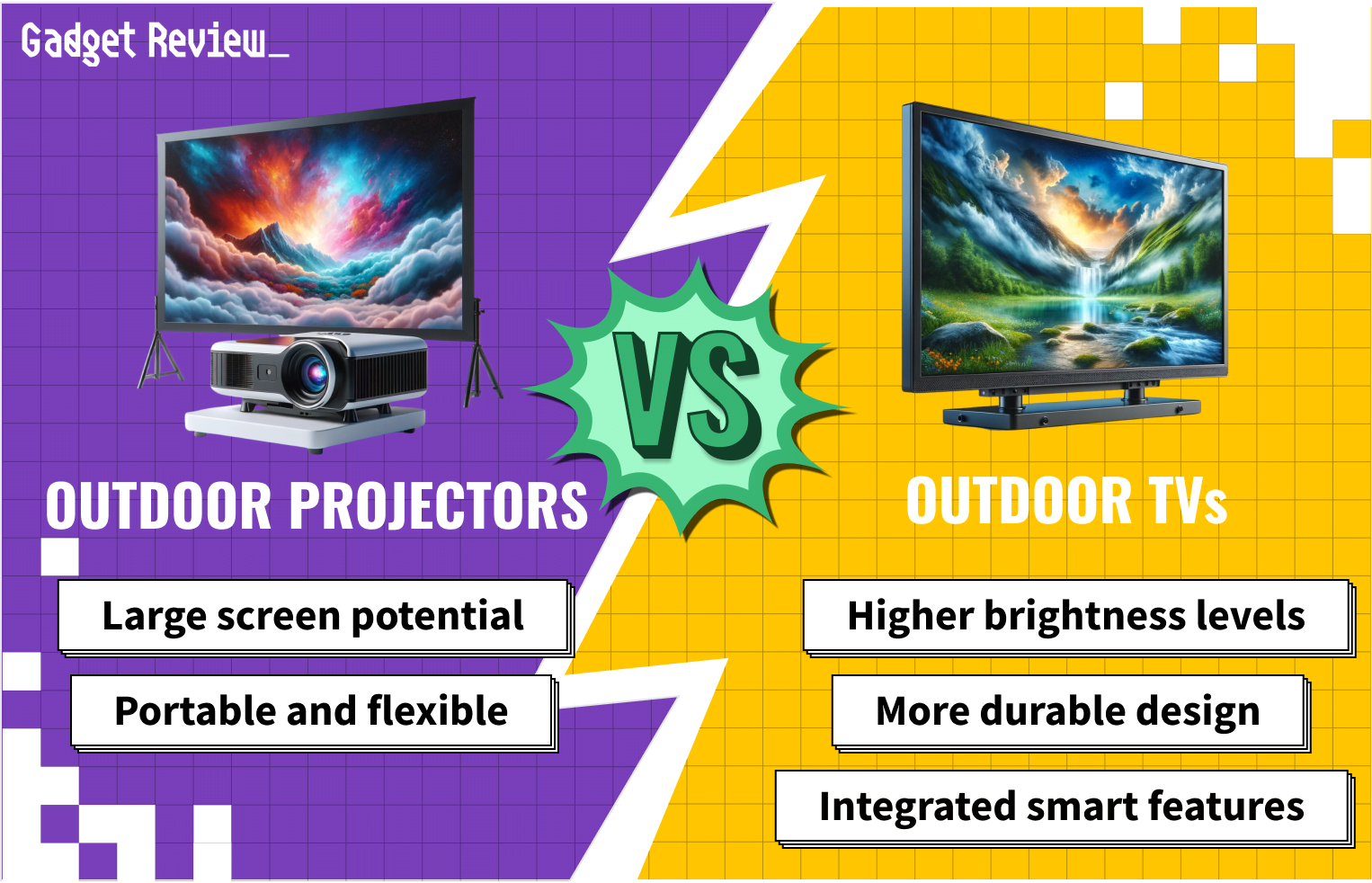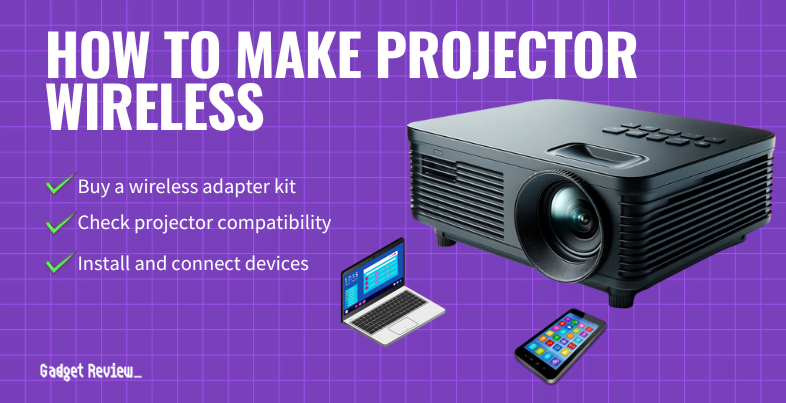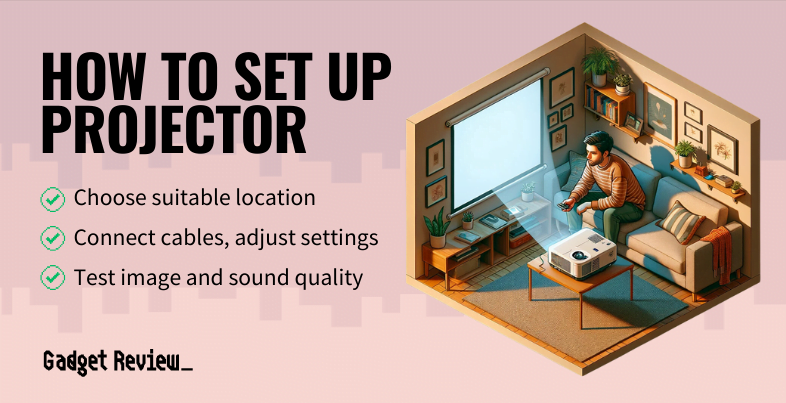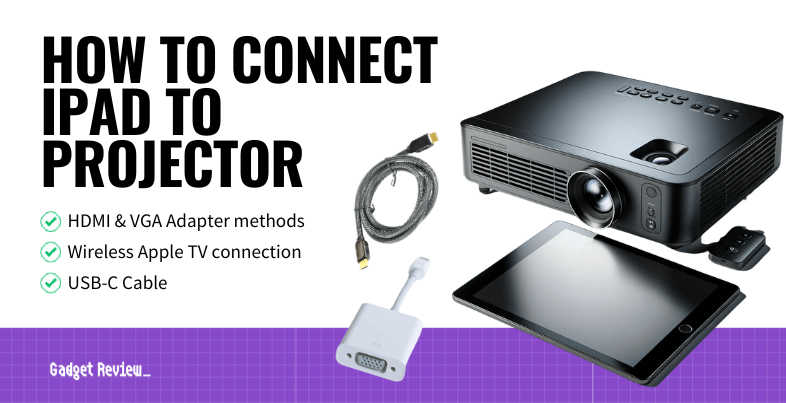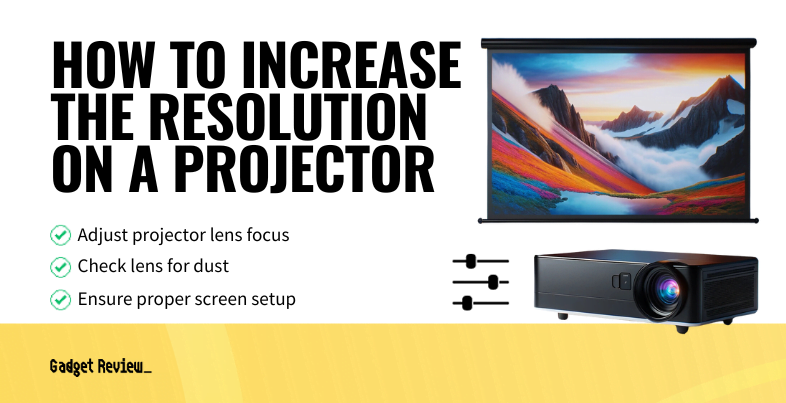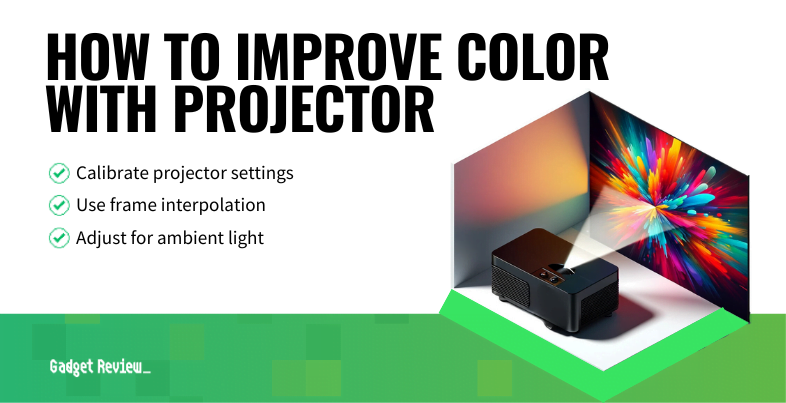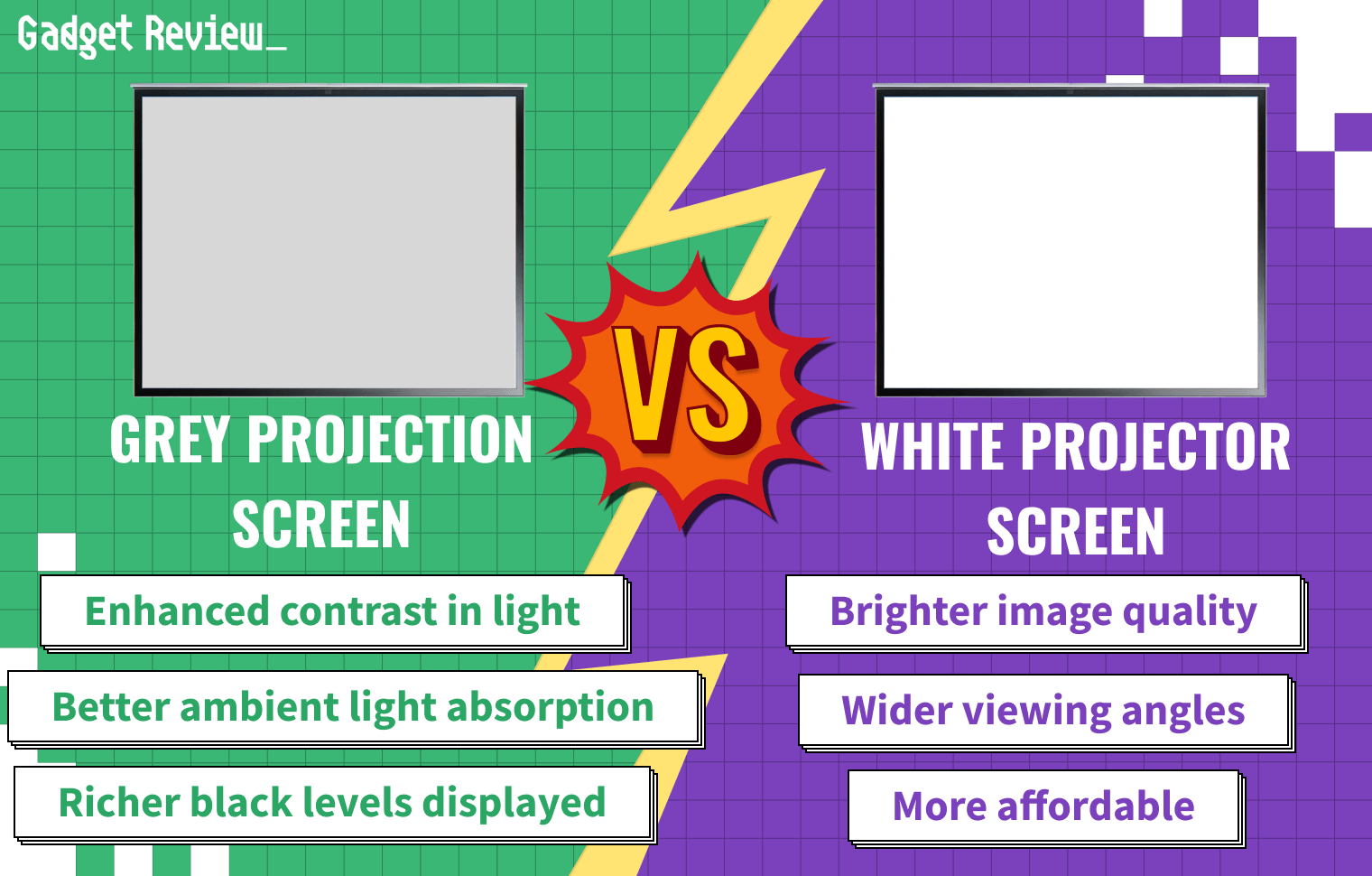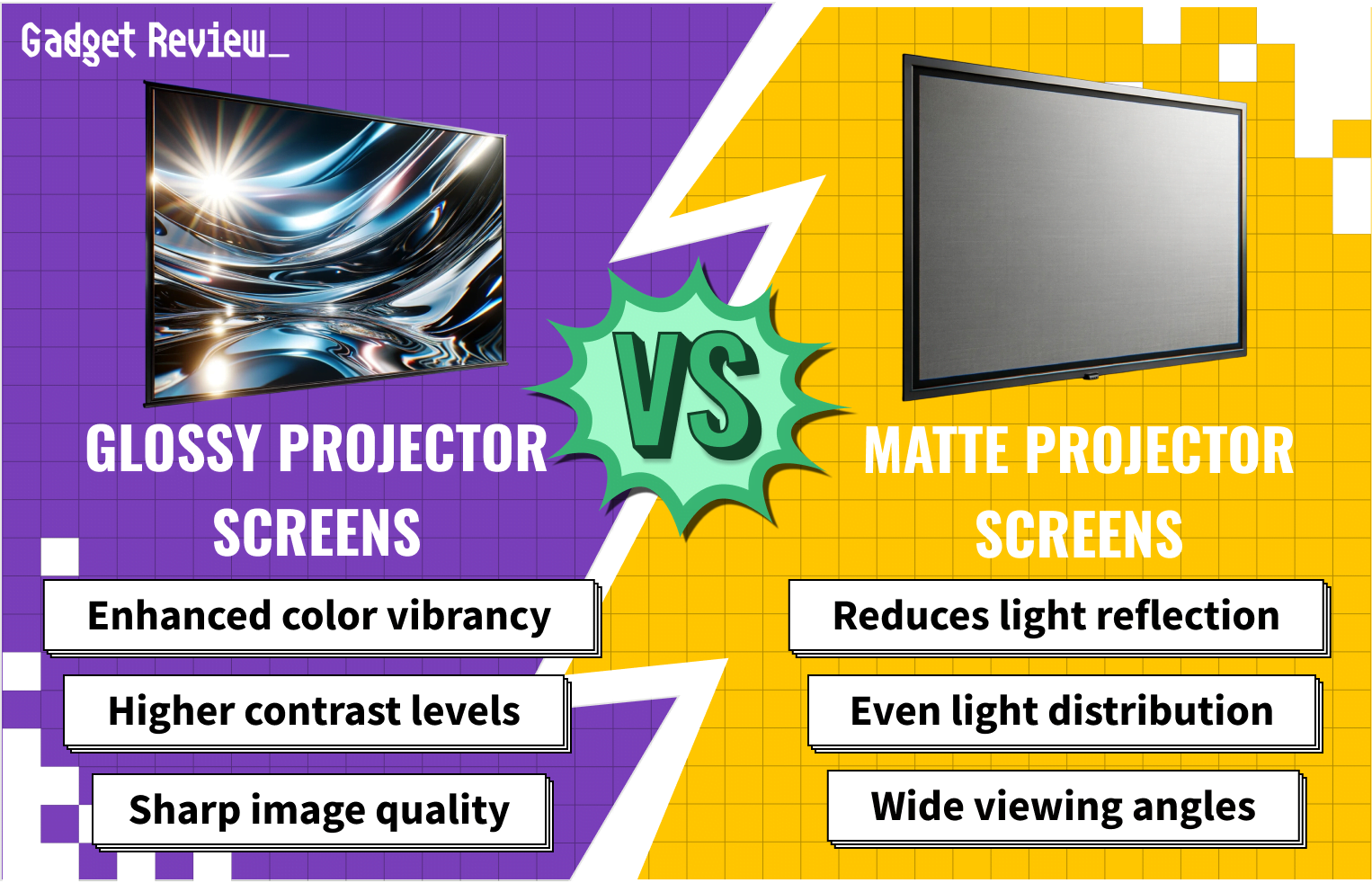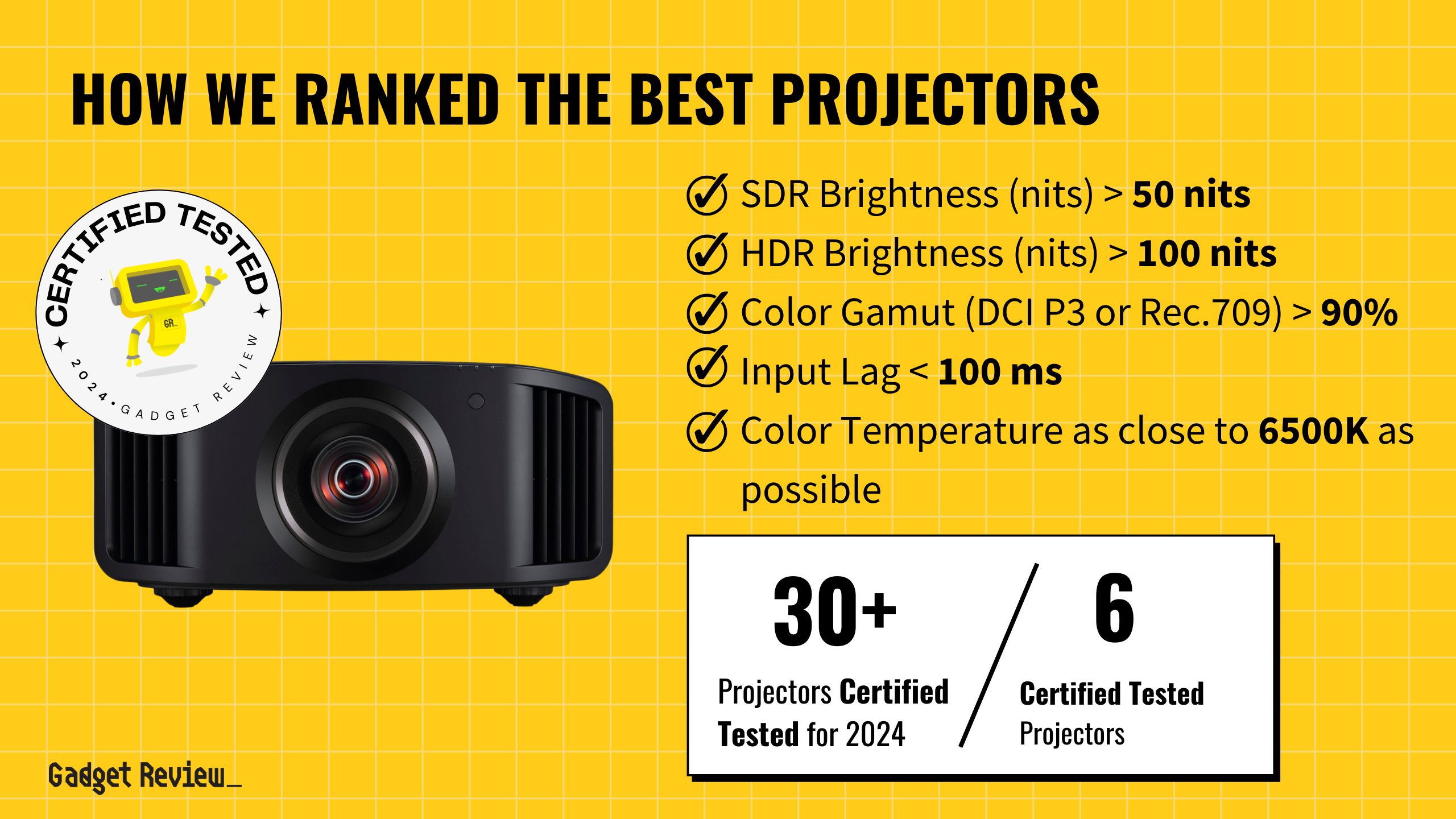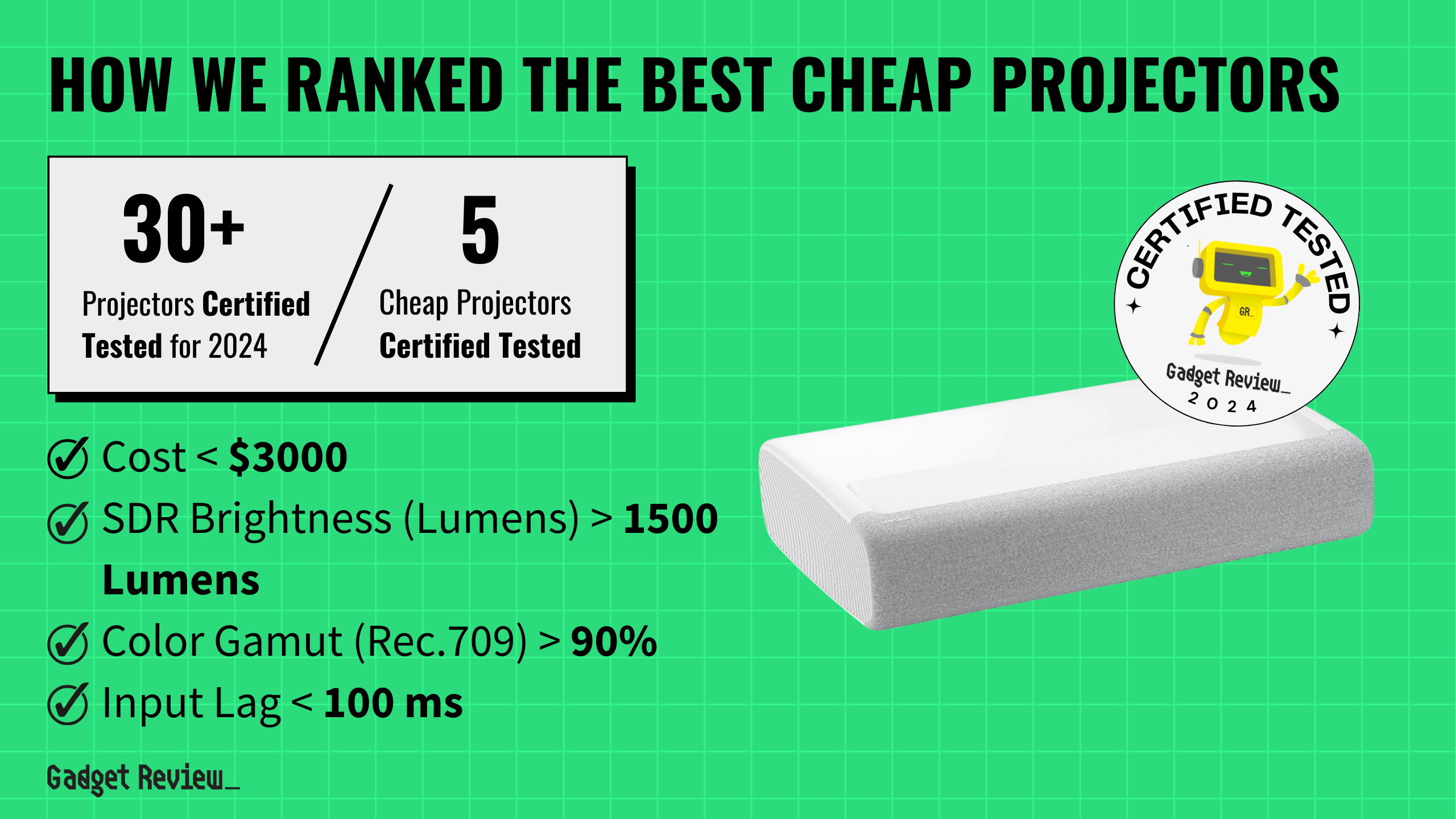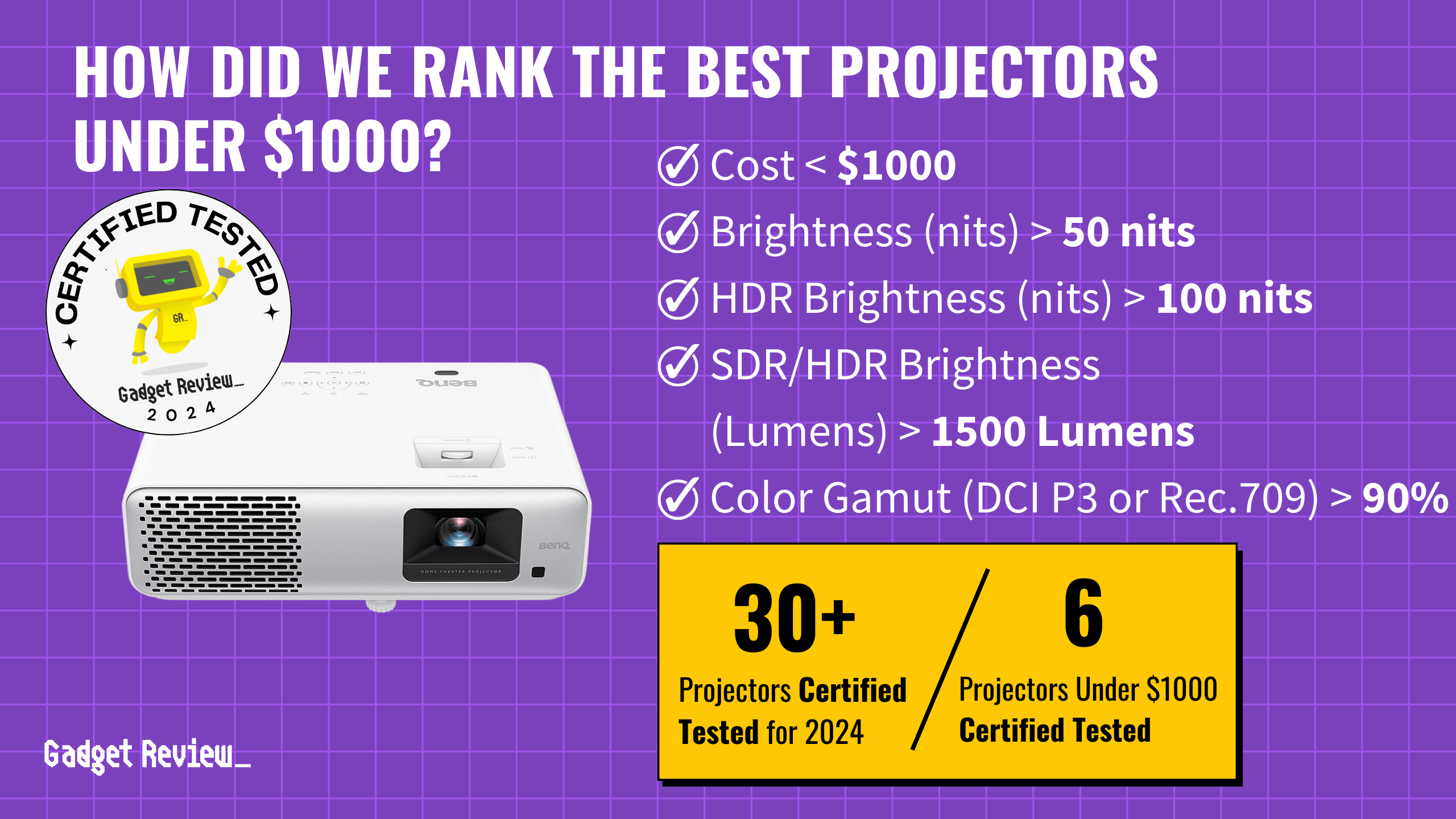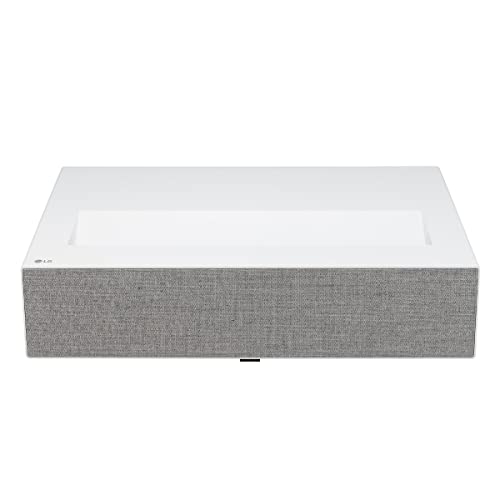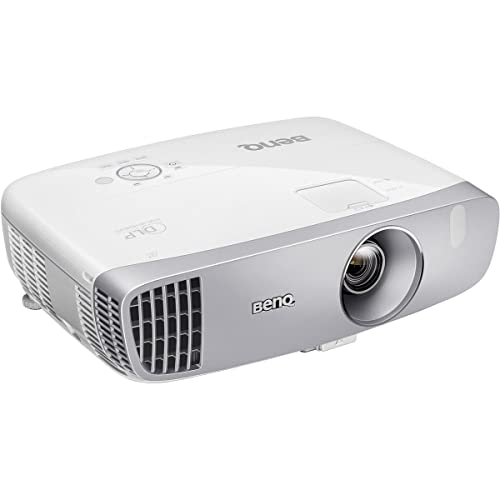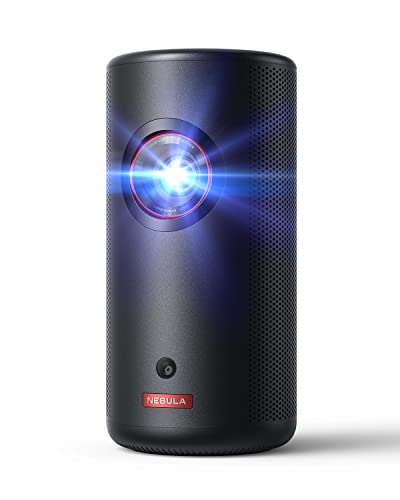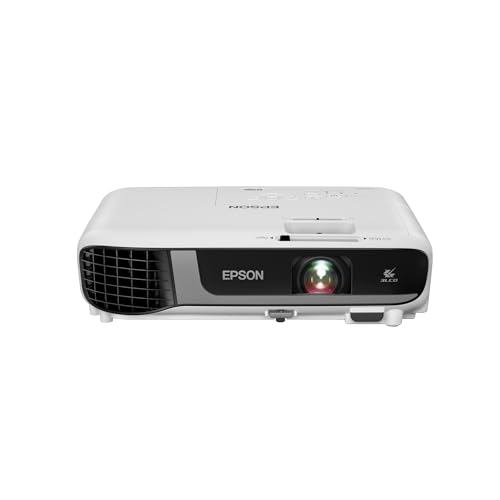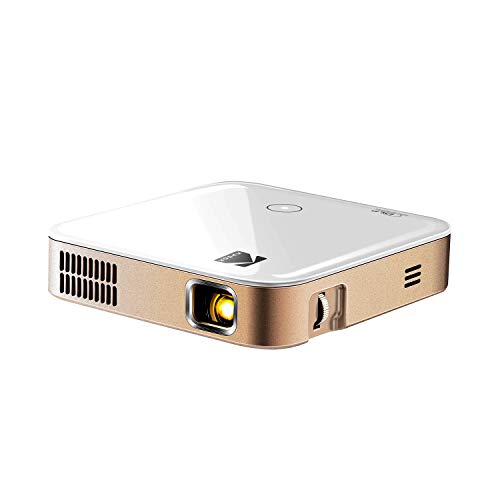When choosing between an outdoor TV and projector, several factors that should be considered. The top outdoor TVs and best projectors offer benefits for outdoor viewing, but you must compare their features to help you determine which better suits your outdoor viewing needs. Remember to invest in gadget insurance such as AKKO so that any device damage or defect is covered.
Key Takeaways_
- Outdoor TVs may provide a majority of advantages over projectors, but they do not currently have as wide a range of screen sizes.
- Outdoor TVs provide increased brightness, durability, and reduced glare for users in their backyards or on their patios.
- Outdoor projectors provide large-scale viewing experiences in outdoor spaces.
Projectors and Outdoor TVs Compared
When choosing between outdoor projectors and TVs, various factors such as price, usage, and features play a big role. The following table offers a detailed comparison to help you decide which option best suits your needs.
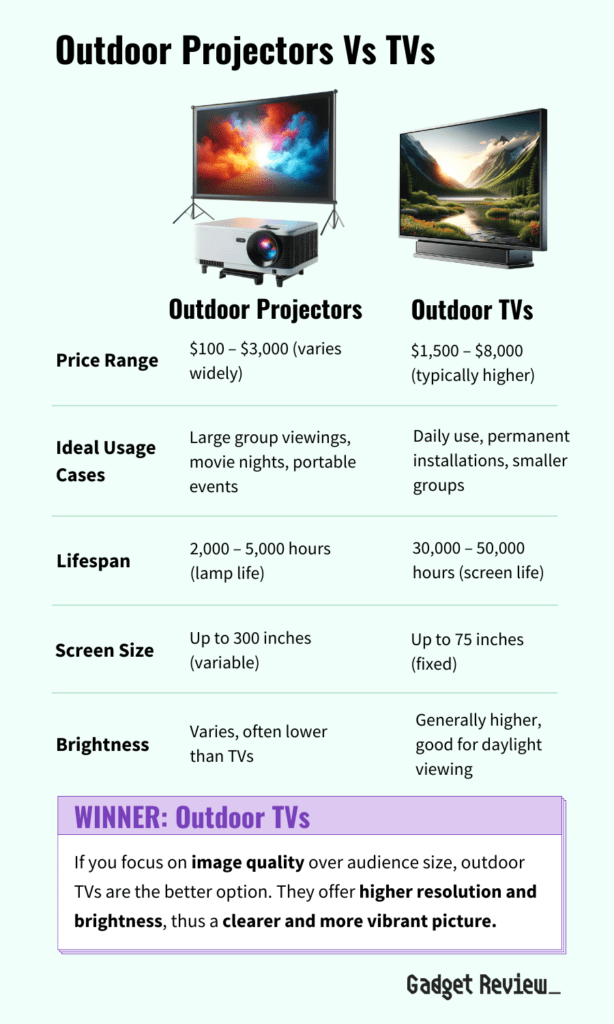
| Feature | Outdoor Projectors | Outdoor TVs |
|---|---|---|
| Price Range | $100 – $3,000 (varies widely) | $1,500 – $8,000 (typically higher) |
| Ideal Usage Cases | Large group viewings, movie nights, portable events | Daily use, permanent installations, smaller groups |
| Lifespan | 2,000 – 5,000 hours (lamp life) | 30,000 – 50,000 hours (screen life) |
| Screen Size | Up to 300 inches (variable) | Up to 75 inches (fixed) |
| Brightness | Varies, often lower than TVs | Generally higher, good for daylight viewing |
| Installation | Portable, requires setup | Fixed installation, more durable |
| Audio Quality | Usually requires external speakers | Built-in speakers, better integrated audio |
| Connectivity | Often limited, requires additional devices | Typically includes smart features, multiple ports |
Which is better? If you ignore audience size, then outdoor TVs are the better pick. Outdoor TVs typically offer higher brightness, more durability, and integrated smart features, making them ideal for regular use in various lighting conditions. However, projectors provide larger screen sizes and portability, which can be advantageous for temporary setups or large gatherings.
Ultimately, the best choice depends on factors like budget, intended use, installation space, and personal preferences for image quality and screen size. Both projectors and outdoor TVs provide valuable options with excellent picture quality for you if you’re looking for an entertainment device to use in an outside space. You will likely have to choose between a DLP vs. a 3LCD projector. However, you may find that a 3LCD projector will work well for outdoor use because of its excellent color accuracy and contrast.
insider tip
If you are looking to use it during the day, an outdoor TV provides excellent brightness and color.
If you choose to go with a TV, you will need to look for a designated outdoor TV rather than a standard indoor one. Make sure you get a TV with HDMI ports to watch your favorite Blu-Ray or play games.
What Makes an Outdoor TV?
Most consumers use their televisions inside the house, but there are those that use them outside if the weather is right. As a result, some brands make outdoor TVs that typically have higher brightness and power and increased damage protection. One brand claims that their outdoor TVs are 50% brighter in their image compared to indoor TVs.
Additionally, these TVs are designed to include reduced glare from ambient light to reduce the effect of sunlight. Many of these outdoor devices can handle more in terms of weather, humidity, and dust than their indoor counterparts. You may want a TV with multiple HDMI ports at a reasonable price.
What are Outdoor Projectors?
Outdoor projectors are special devices designed for projecting images and videos outside. Unlike traditional indoor projectors, they are built to handle outdoor conditions, offering flexibility for events such as backyard movie nights, outdoor presentations, or community gatherings.
These projectors have enhanced brightness and contrast to combat ambient light, and often feature portable designs for easier transport and installation. Their ability to create large screens on virtually any flat surface makes them popular for creating immersive viewing experiences in larger venues.
TV and Projector Screen Sizes
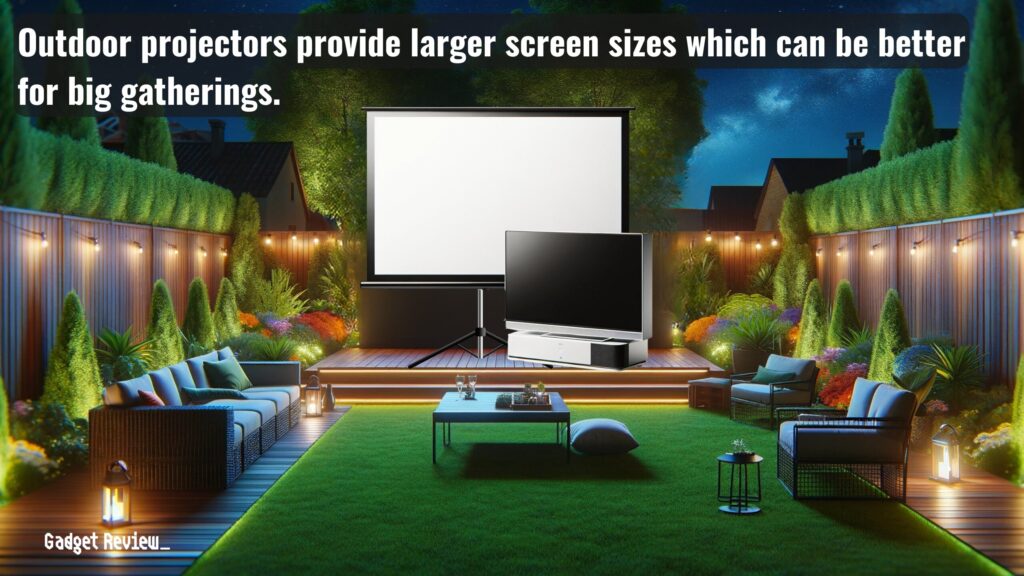
The ability to purchase a large screen size remains the main advantage of an outdoor projector over a TV. Although TVs are getting larger, most TVs do not surpass 85”, and a large TV has a high price. Projector screens that are 100-120” diagonally are the most common, though you can get larger or smaller versions.
warning
Some projectors may require a screen, but you often can use the side of your house or a solid wall as your location.
If you are looking to have a backyard movie night or viewing party with many people, you likely will want a projector screen with more space so everyone can comfortably see the image. You may get away with using the back of your house, a van, or another solid surface as the backdrop for your viewing.
How Does Weather Affect a TV or Projector?
Despite the fact that some brands sell TVs designed for outdoor use, many still expect your TV to be under a cover or in shade and don’t exclusively consider bad weather. So, if you do not want to use an awning, you will need to find out that explicitly states it doesn’t take sun damage.
Unlike an outdoor TV, a portable projector can be set up and moved when you are interested in using them. You may find that this portability allows you to keep the projector out of any bad weather.

